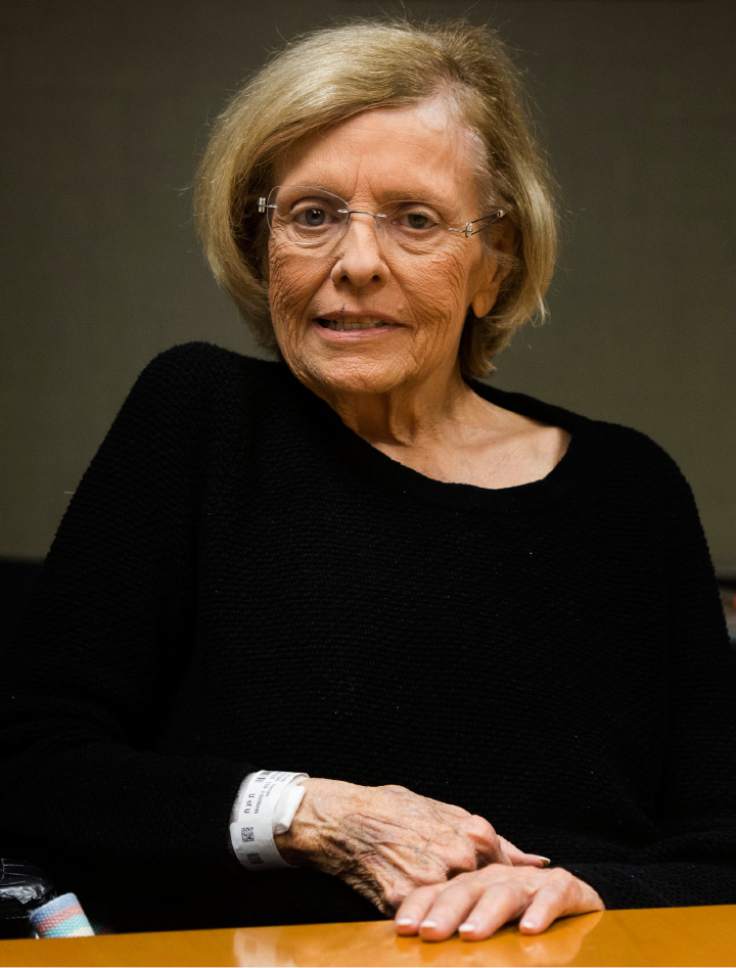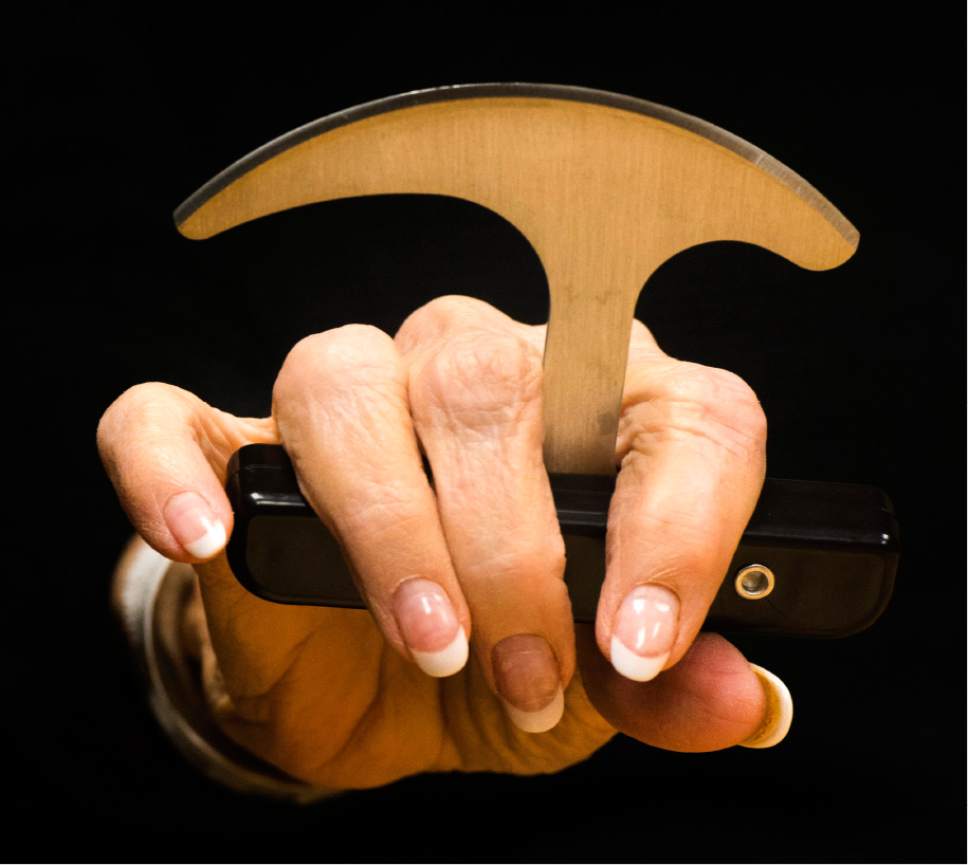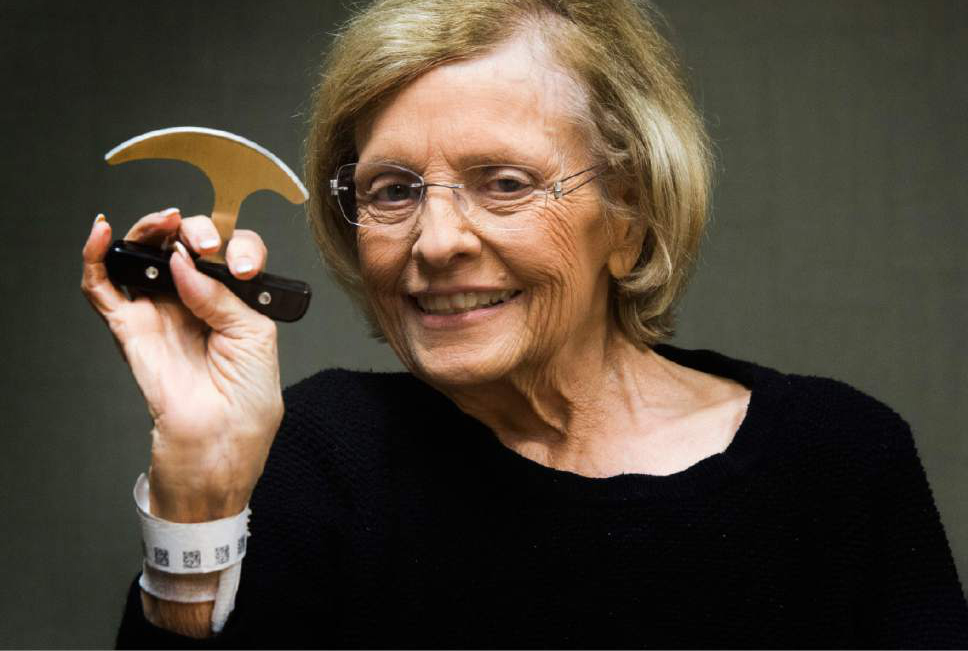This is an archived article that was published on sltrib.com in 2016, and information in the article may be outdated. It is provided only for personal research purposes and may not be reprinted.
Cornbread stuffing — with its texture, time-consuming recipe, and taste — is Brenda Weech's favorite Thanksgiving dish.
It conjures images of Weech's mama cooking it up for her and her brother in the Texas panhandle, and waiting to be devoured when they all got home from their annual holiday trek to see a Dallas Cowboys football game. It reminds her of mouth-watering meals in the joy-filled company of family and friends.
This year, as millions of Americans gather to gobble up drumsticks, pile on sweet potatoes and wolf down pumpkin pies, this 77-year-old mother is salivating for a few bites of that savory Southern stuffing.
The gastronomic thrill is made all the more remarkable, given that Weech lost all sense of taste in February, when a stroke paralyzed her right side after open heart surgery. In October, she suffered a second stroke, shutting down her left side and making it nearly impossible to swallow.
She has been undergoing rehabilitation at University Hospital in Salt Lake City for three weeks, spending four hours a day doing exercises meant to help her get down even a tiny morsel of solid food. Progress has been slow, but steady. She has worked diligently with occupational therapists, learning to cut meat with her right hand only or move almost imperceptibly the fingers on her left.
Weech, who lives with her son's family in Lehi, knows she's one of the lucky ones. She never had a feeding tube, which provides all nutrition directly into the stomach. Such tubes can be temporary or permanent, assisting those who cannot take in enough nutrients by mouth.
Most of those patients do not want to hear or think about food, says Mindy Tanner, an occupational therapist at the University of Utah who works with Weech. Even an inadvertent mention of lunchtime can cause a feeding-tube patient to wince.
"Food is a taboo topic," says Jessica Minnesota, a speech therapist at the hospital. "Talking about food to these patients does more harm than good."
They don't fantasize about eating, she says. Some of them crave nothing more than "a sip of water."
Getting patients back from tubes to tongues "is a long road," Minnesota says, "but it's the happiest part of my job."
Weech is inching toward that happy place herself.
—
Nibbles and quibbles • In the aftermath of her first stroke, Weech saw not only her taste buds vanish but also all desire for food.
Bread seemed like cardboard and salt had lost its savor. Seriously. Though mashed potatoes were once delectable, she grew weary of yet another plateful.
"It was too much work to eat," she recalls. "I lost maybe 40 pounds."
Only watermelon and ice cream, says her husband, Dall Weech, remained appealing.
Dall, 80, has continued his work as a pediatric dentist in Arizona, largely with Native American tribes, while his wife has been staying at son Jared's place in Lehi, too weak to travel.
"We almost had to force-feed her — it was a chore to get her to drink Ensure," says Jared Weech. "It almost might have been better if she had a feeding tube."
Despite having no appetite, Brenda Weech began to watch TV cooking shows.
"You eat with your eyes first," Dall says. "There is pleasure in pretending, but no nourishment."
When the second stroke struck, in October, Weech still could not taste but now could not swallow either. No more bacon, beef or biscuits for her — even if she wanted them.
So she started over, retraining her throat muscles to take food down the chute and her fingers to wiggle.
The staff gave her a "rocker knife" to help her cut meat and other food with one hand, while providing a plate with sides so items wouldn't fall off.
Slowly, her ability to taste has returned and swallowing — at least of soft foods — is a definite accomplishment.
"I can eat turkey," she says with a grin, "but I have to cut it carefully."
—
There's more to it • Brooke Hopkins, a lanky, charismatic English professor at the U., was paralyzed in a biking accident in 2008. The retired wordsmith could not move his limbs or feed himself. During his initial hospitalization, Hopkins had a temporary tube providing nutrition, but soon was able to eat real food again, one of his long-standing delights.
Four years later, however, the threat of aspirating food into his lungs, with its accompanying anxiety and pain, forced upon him a choice many had dreaded on his behalf: a permanent feeding tube.
"People ask him if he misses food, if he wishes he could eat. They intimate that the deprivation must be awful, especially for someone who enjoyed food as much as he did and loved long dinners in exotic places and relished a nice wine or, rarely, a good stiff drink," his wife, Peggy Battin, wrote in 2012 on a blog the couple kept. "Meals have always been a social time, a time for long conversations, an important part of life; in our earlier days, we would sit at a little table by the window looking out into the garden, spending a long hour at dinner, sharing a bottle of wine and a real marriage's deep conversation. But there's no more eating now, and while you can still put a little bit of wine in through the tube, it isn't the same. Those pleasures are gone."
The reality was unexpected, Battin recalls now, the tube was "liberating, not painful, not degrading."
Eating has four main components: presentation, aroma, taste and swallowing. With a feeding tube, Hopkins realized, you can still enjoy three of the four.
"You can smell the aromas of food. You can admire the presentation of food, slivers of this and morsels of that spread out on a platter, embellished with little frills of garnish or dots of sauce," the couple wrote. "You can taste food: You can put it in your mouth, swirl it or chew it or just leave it tucked inside your cheek for a while, the way Brooke did once with a piece of dried mango. But you don't have to swallow it. You can just put it out of your mouth, the way a wine taster doesn't swallow the wine, spit it discreetly into a paper napkin or, more elegantly, into a little silver bowl."
Swallowing is "the least interesting part of eating," they wrote, "and that's the part you don't have to do."
Hopkins died in 2013, but Battin remembers fondly the final half year or so he was on a feeding tube.
"We managed still to have people come for dinner, and we asked them to bring the meal," she recalls. "That was wonderful. They were glad to do it."
Battin, a nationally recognized medical ethicist at the U., believes feeding tubes have been unfairly "demonized."
"For us, it wasn't a problem when we discovered the positives," she says. "You get most of the pleasures and don't miss any of the social benefits."
For her part, Weech is just relieved that all her exercises have been successful. She now can consume some solids, including turkey, potatoes and gravy and apple pie.
She will be discharged Thanksgiving Day to return to Lehi — in time to roll up her sleeves and (with her husband's help) re-create that cornbread stuffing from sunnier, simpler days.
"You don't realize what a pleasure eating is," Weech says, "till it's gone."
pstack@sltrib.com, Twitter: @religiongal







